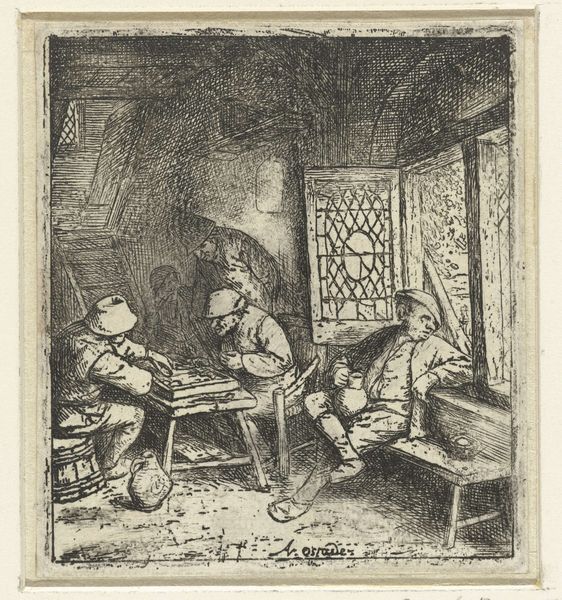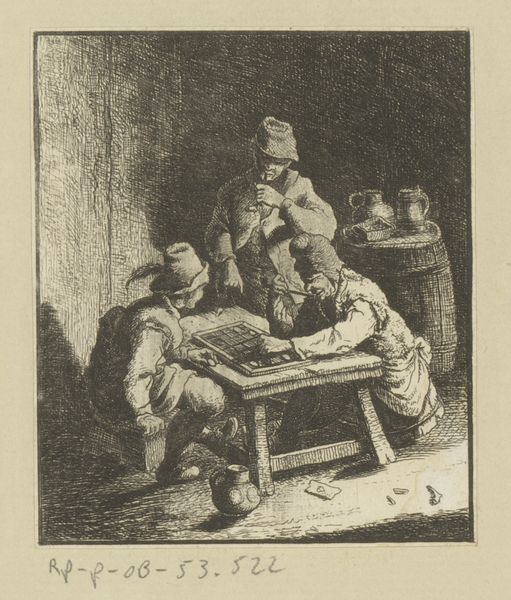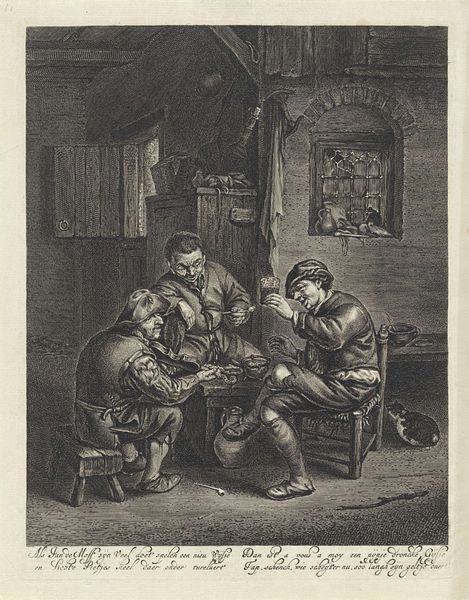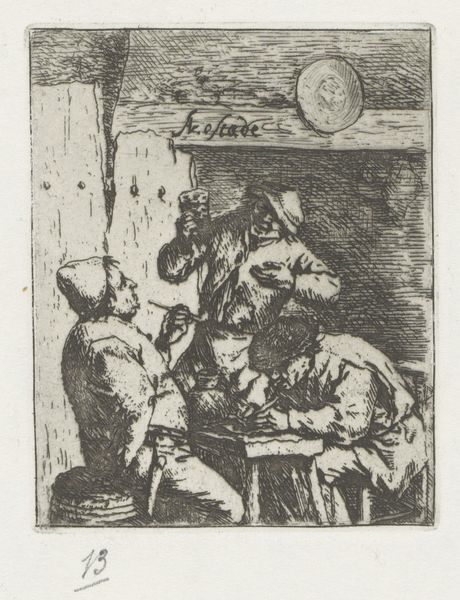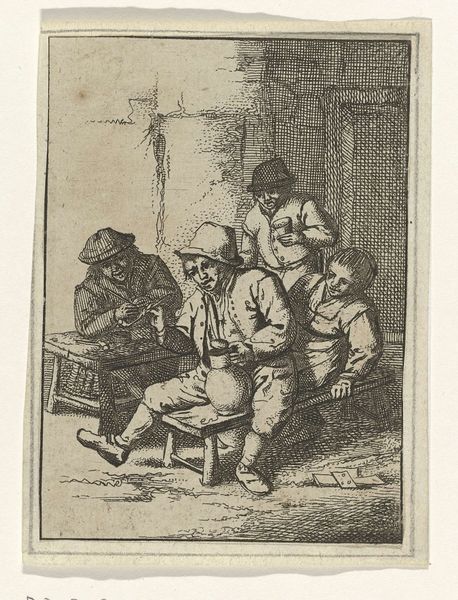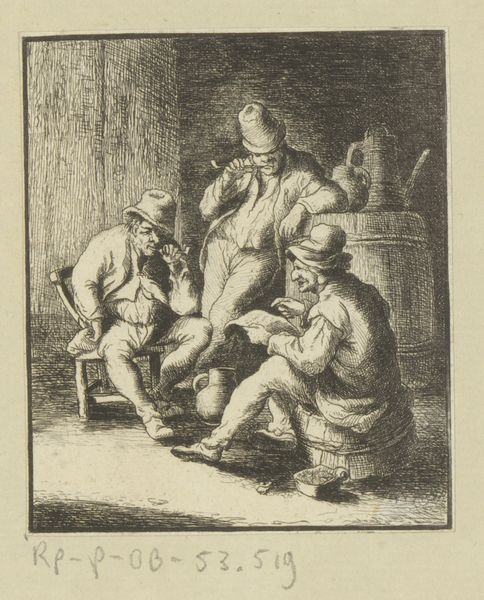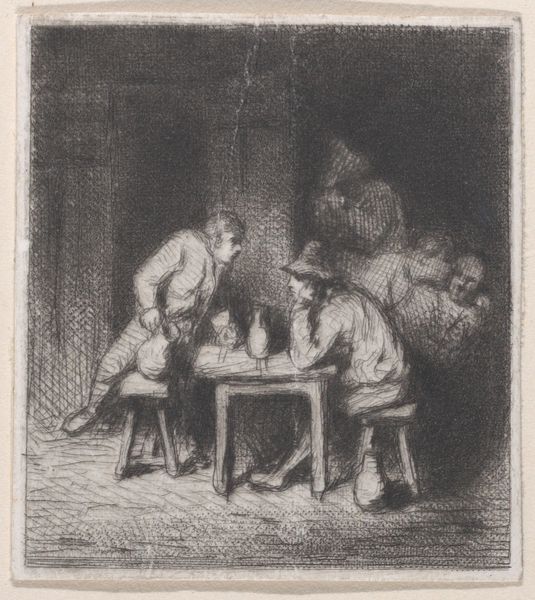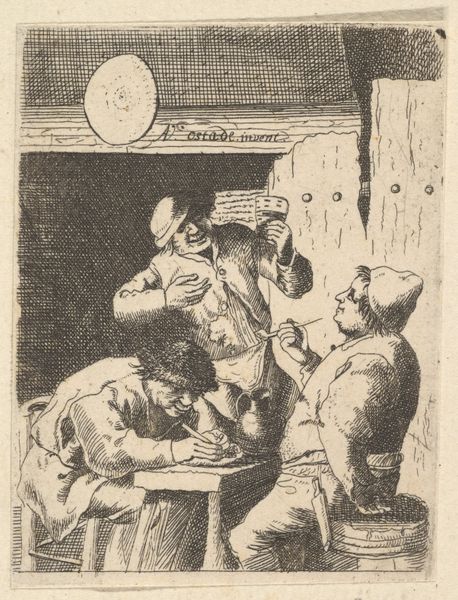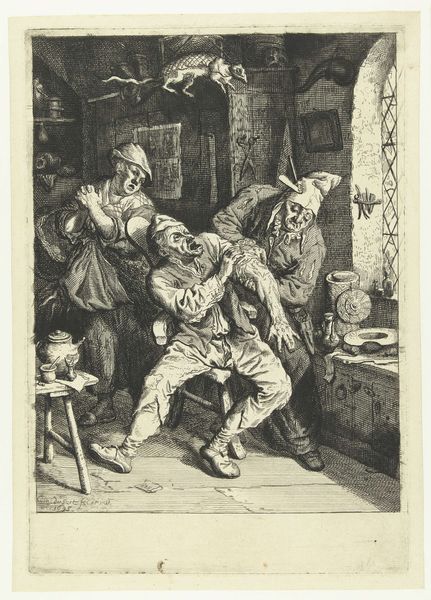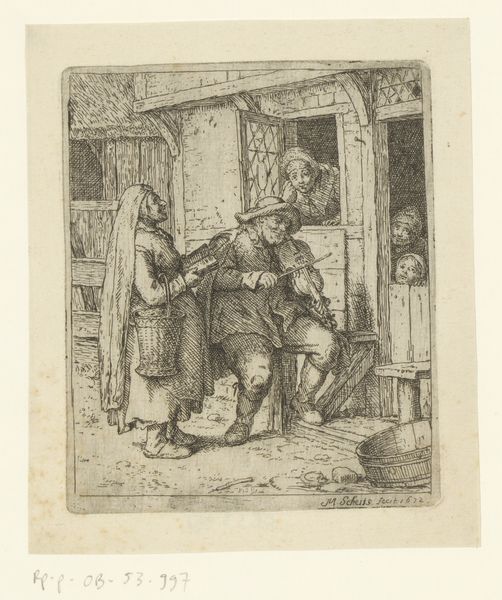
etching, engraving
#
pen drawing
#
dutch-golden-age
#
mechanical pen drawing
#
pen illustration
#
pen sketch
#
etching
#
old engraving style
#
personal sketchbook
#
pen-ink sketch
#
pen work
#
sketchbook drawing
#
genre-painting
#
sketchbook art
#
engraving
#
realism
Dimensions: height 85 mm, width 74 mm
Copyright: Rijks Museum: Open Domain
Curator: Welcome. We're standing before Adriaen van Ostade's etching, "Trictrac spelers in een herberg," dating back to around 1666-1670. Editor: My first impression is the density and darkness. The composition seems chaotic yet contained within the small frame. It speaks of lives lived closely together, maybe with a touch of desperation. Curator: Indeed. Ostade's choice of etching brings a specific cultural weight to the tavern scene. These settings, particularly in the Dutch Golden Age, were sites of social negotiation and the reinforcement of societal norms through activities such as drinking and games. Often, though, such gatherings are exclusively male and become arenas of masculine display. Editor: The image carries an immediate historical echo of such gatherings; the trictrac game functions here as a potent emblem. Gambling, for instance, has a history that intersects with anxieties about work ethic, particularly in the emerging capitalist cultures. Is it work, or vice? This echoes throughout similar paintings in the era. The imagery certainly suggests commentary on leisure, labor, and morality. Curator: Precisely! Ostade consistently engages with these complex social dynamics within his genre paintings. While appearing as simple depictions of daily life, works like this reflect power structures, including the relationship between the burgeoning middle class and the working poor, usually depicted with varying degrees of empathy. Editor: I'm drawn to the light in the window contrasting the shadow blanketing much of the composition. It creates an intentional symbolic juxtaposition, the clarity of outside reality vis-a-vis the moral murkiness brewing within the herberg. This use of contrasting light isn’t just aesthetic; it's a rhetorical device designed to drive the narrative, framing questions about value and choices. Curator: The interplay of light and shadow is masterfully used by Ostade to emphasize specific elements and guide the viewer’s gaze. He uses simple moments—men gambling, drinking—to examine themes of poverty, class differences, and societal behavior that resonates even in our modern contexts. Editor: Agreed. Its symbols trigger our established collective conscious and prejudices; the etching, while modest, provides a stark representation and provokes essential dialogues. It shows just how deeply symbolism pervades everyday interactions— then, as now.
Comments
No comments
Be the first to comment and join the conversation on the ultimate creative platform.
